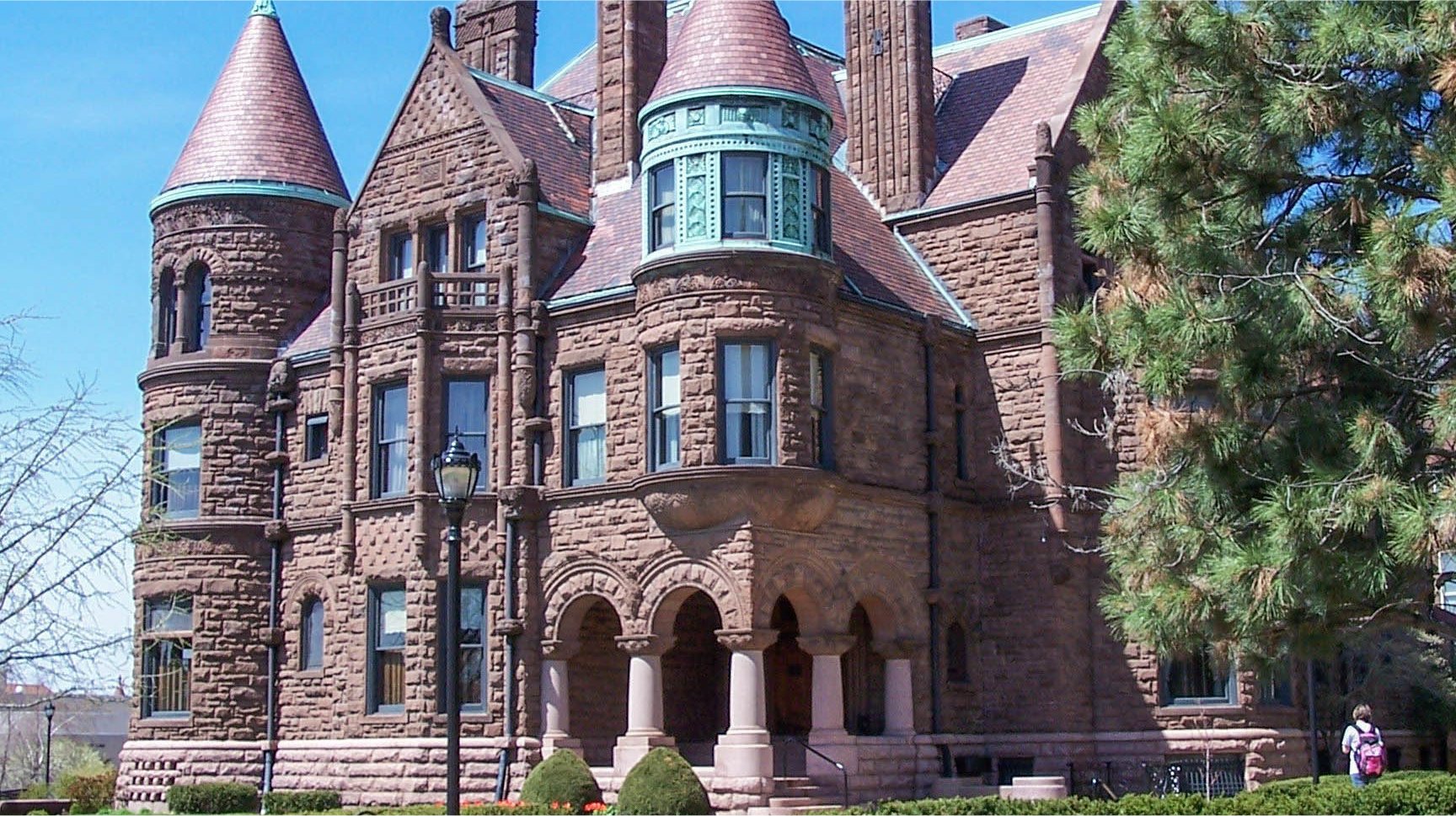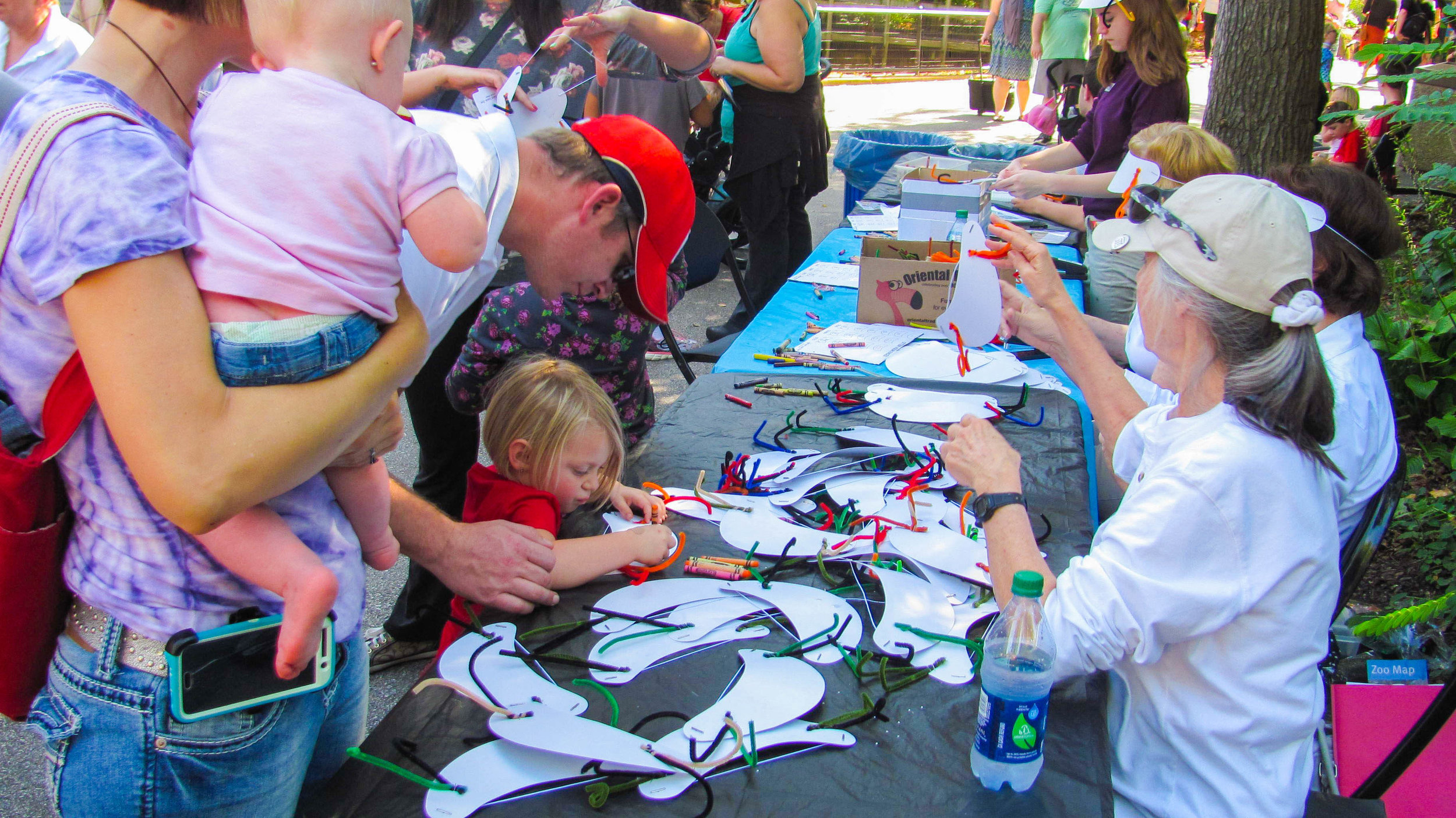Visitors Guide to Historical Attractions
Metropolitan Saint Louis
Saint Louis has its origins when in 1764 French fur traders established a small village named after Louis IX, the Crusader King of France. There are a number of museums and historical sites that tell the Saint Louis' story. The Museum of Westward Expansion documents the history of European expansion from the days of Lewis and Clark. The area has a number of historical houses and societies that offer tours. In Saint Louis County the Museum of Transportation has over 300 locomotives, rail cars, and other forms of transportation.
PAGE 1 OF 2
Bellefontaine Cemetery
Saint Louis, MO
Bellefontaine Cemetery, established after the cholera epidemic of 1849, is home to a number of historic and architecturally significant mausoleums and monuments. Notable graves include explorer William Clark, beer magnate Adolphus Busch, inventor and engineer James Eads, and poet Sara Teasdale.
Calvary Cemetery
Saint Louis, MO
Calvary Cemetery, established in 1857, is one of Saint Louis' largest cemeteries. The graves of many noteworthy Saint Louisans, including Civil War General William Tecumseh Sherman; Dred Scott, the slave who gained a place in American history when he sued for his freedom, and playwright Tennessee Williams, are here. The cemetery also contains many architecturally significant tombs and memorials.
Campbell House Museum
Saint Louis, MO
Built in 1851, the first house in the elegant neighborhood Lucas Place, the Campbell House, was the home of renowned fur trader and entrepreneur Robert Campbell and his family from 1854 until 1938. The museum contains hundreds of original Campbell possessions including furniture, paintings, clothing, letters, carriages and a unique set of interior photographs taken in the mid-1880s.
Carondelet Historical Society
Saint Louis, MO
The Carondelet Historic Center is housed in the former Des Peres School where Susan Blow conducted the first publicly funded, continuously operating kindergarten in the United States in 1873. The Center is a museum that preserves the history of the area of Saint Louis known as Carondelet and the memory of Blow. The building is on the National Register of Historic Places and is the home of the Carondelet Historical Society.
William Clark's Grave
Saint Louis, MO
William Clark - co-commander of the Discovery Expedition with Meriwether Lewis and later Brigadier General of Militia and Superintendent of Indian Affairs for the Louisiana Territory was buried on the farm of his nephew outside Saint Louis in 1828. Today the grave is located within the boundaries of Bellefontaine Cemetery. An elaborate granite obelisk, erected in 1904 and featuring a bust of the explorer and an inscription, marks the site.
Cupples House
Saint Louis, MO
The Samuel Cupples House is located on the campus of Saint Louis University. This historic mansion is a rare example of Richardsonian Romanesque architecture in Saint Louis. The 42-room, castle-like mansion was built by wealthy Saint Louis entrepreneur Samuel Cupples and is listed on the National Register of Historic Places. It has been restored to its original splendor with many of its opulent original furnishings and is open for public tours. The McNamee Gallery houses educational exhibitions and art exhibits.
DeMenil Mansion
Saint Louis, MO
The DeMenil Mansion, listed on the National Register of Historic Places, is one of only a handful of homes remaining that were built in the Greek Revival style in Saint Louis. The oldest part of the home dates from 1848 and was built by Henri Chatillon, a hunter and guide for the American Fur Company. The DeMenil family purchased the home in 1856 and made two additions that transformed the farmhouse into the mansion it is today. The mansion is an excellent example of a Victorian home of a wealthy family and hosts the largest permanent collection of memorabilia from the 1904 World's Fair.
Eads Bridge
Saint Louis, MO
The Eads Bridge was designed and built by engineer James B. Eads and opened July 4, 1874 as the world’s largest bridge and the first railroad bridge to cross the Mississippi River. The bridge was dedicated as a National Historic Landmark in 1964, and the last train passed over the bridge in 1974. The bridge was closed to automobile traffic in 1991. In 1993 rail traffic was restored when the first phase of MetroLink project was completed. A restoration project initiated by the City of Saint Louis has reopened the bridge to automobile traffic as well as featuring a bicycle and pedestrian lane.
Field House Museum
Saint Louis, MO
The Field House Museum is the boyhood home of Eugene Field, the "Children's Poet," whose works include "Little Boy Blue" and "Dutch Lullaby" ("Wynken, Blynken, and Nod"). In 1902 Samuel Clemens (Mark Twain) dedicated a plaque marking the home as Field's birthplace. The plaque is still on the front of the house. The home contains many furnishings that belonged to the Field family. Several rooms are used to display toy collections and traveling exhibits. In 2016 the Field House Museum opened a 4,000 square foot expansion with rotating exhibit spaces, a library, and a gift shop.
Fort Belle Fontaine
Spanish Lake, MO
Fort Belle Fontaine was established in 1805 on the south bank of the Missouri River near its confluence with the Mississippi River. The Fort was the first U.S. military outpost west of the Mississippi River. The site is preserved today as a St. Louis County Park but no physical evidence of the original structures remains as shifts in the Missouri River channel have long buried the original site underwater. The park also offers sweeping views of the Missouri River and overlooks the location of sites where Lewis and Clark camped in 1804.
Gateway Arch National Park
Saint Louis, MO
Located on the banks of the Mississippi River in downtown Saint Louis, the Gateway Arch National Park was established in 1935 to commemorate the westward growth of the United States between 1803 and 1890. The park was established to commemorate the Louisiana Purchase, the subsequent westward movement of American explorers and pioneers, the first civil government west of the Mississippi River, and the debate over slavery raised by the Dred Scott case. The complex consists of the Gateway Arch, the Museum of Westward Expansion, and Saint Louis' Old Courthouse.
Ulysses S. Grant National Historic Site
Grantwood, MO
White Haven was the childhood home of Julia Dent Grant, wife of Ulysses S. Grant, the 18th president of the United States. The Ulysses and Julia lived at White Haven from 1854 to 1859 and they planned to spend their retirement years there. Only 10 acres remain of the original 1,000-acre plantation but the National Park Service has preserved the site and has restored its buildings to their 1875 appearance. The horse stable contains a museum about the lives and legacy of Ulysses and Julia. The park's visitor center has additional exhibit space, a movie theater, an information desk, and a gift shop.
Griot Museum of Black History and Culture
Saint Louis, MO
The Griot Museum of Black History and Culture tells the stories of famous and not-so-famous African-American Missourians including George Washington Carver, Dred and Harriett Scott, musician Clark Terry, Clara Brown, Hiram Young and others. Visitors can experience the 'Middle Passage' on a slave ship made to scale or tour an authentic slave cabin. Artifacts, historical documents and the works of local and national artists are also on display.
Hawken House
Webster Groves, MO
The historic 1857 Christopher Hawken House is the oldest house in suburban Webster Groves. Christopher Hawken was the son of Jacob Hawken who, with his brother Samuel, manufactured the Hawken Rifle. Called the "gun that settled the West," it was the rifle of choice of many famous American explorers and trappers. Listed on the National Historic Register, The Hawken House is an excellent example of a Federal/Greek Revival home. It is decorated with furnishings of the era and is home to the Webster Groves Historical Society.
Jefferson Barracks County Park
Lemay, MO
Jefferson Barracks was established in 1826 as the country’s first “Infantry School of Practice,” and served as a major military installation until 1946. Named in honor of former President Thomas Jefferson, the post played an important role in westward expansion. Jefferson Barracks served as a gathering point for troops and supplies bound for service in all major conflicts beginning with the Mexican-American War through World War II. Jefferson Barracks is now a county park perched on a scenic bluff overlooking the Mississippi River.
EXPLORE PAGE 2 OF Historical Attractions in Saint Louis
For Travelers Heading Up River
Meeting the Missouri River
The two longest rivers of the United States, the Missouri and the Mississippi, meet at Saint Charles County, Missouri. The Historic Saint Charles downtown area offers visitors a variety of attractions including the Lewis and Clark Boat House and Nature Center, The Foundry Art Centre, and Missouri’s First State Capitol. Nearby is Confluence State Park and the Daniel Boone Home.
For Travelers Headed Across the River
Meeting of the Great Rivers Scenic Byway
The Meeting of the Great Rivers Scenic Byway area is one of America’s newer scenic byways. With over 20,000 acres of forest and wetlands at the heart of the Mississippi Flyway, it is a nature lovers paradise. Visitors will find spectacular colors in the fall and bald eagles in the winter. History abounds in the region ranging from the prehistoric Cahokia Mounds to sites on the National Register of Historic Places.
For Travelers Heading Down River
French Colonial Country
Down river of Saint Louis and the Meeting of the Great Rivers Scenic Byway area is Ste. Genevieve, Missouri and Randolph County, Illinois. This area was heavily influenced by the French fur traders who inhabited the region from 1700 to 1840.































